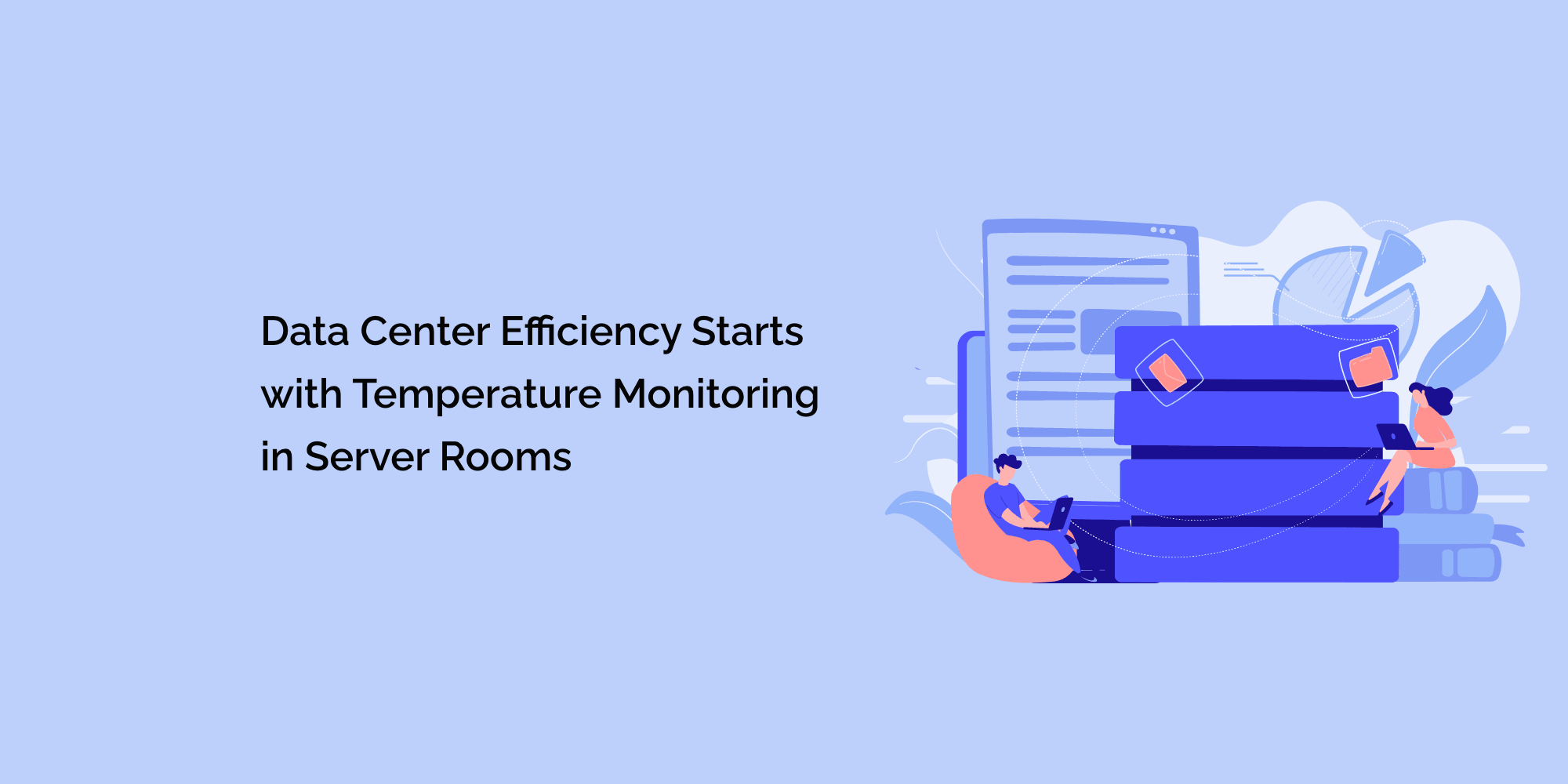Data centers are the backbone of the digital age, providing the infrastructure for storing, processing, and managing vast amounts of critical data. As data center technologies continue to advance and workloads become more demanding, efficient temperature management becomes crucial for data center efficiency and reliability. The temperature within server rooms directly impacts hardware performance, energy consumption, and overall data center operations. Temperature monitoring emerges as a fundamental practice in data center management, ensuring optimal performance, preventing downtime, and maximizing energy efficiency. In this comprehensive blog, we will explore the significance of temperature monitoring in server rooms, its impact on data center efficiency, and the best practices to optimize temperature management for peak data center performance.
Understanding the Role of Temperature in Data Center Efficiency:
Temperature plays a pivotal role in data center efficiency due to the following reasons:
-
Hardware Performance: Modern data centers house high-performance hardware components that require stable operating temperatures for optimal performance. Maintaining the right temperature range enhances the reliability and efficiency of these components.
-
Energy Consumption: Cooling data centers accounts for a significant portion of their energy consumption. Effective temperature management ensures cooling systems operate efficiently, reducing energy usage and operational costs.
-
Thermal Stability: Consistent temperature control prevents thermal fluctuations that can lead to thermal stress and affect hardware performance and longevity.
-
Cooling System Efficiency: Monitoring temperature data allows data center administrators to fine-tune cooling systems, improving their efficiency and effectiveness.
- Preventing Downtime: Overheating can lead to hardware failures and system downtime, impacting data center availability and service continuity.
The Significance of Temperature Monitoring in Server Rooms:
Temperature monitoring in server rooms is essential for the following reasons:
-
Early Issue Detection: Real-time temperature monitoring enables early detection of temperature fluctuations, allowing administrators to take prompt corrective action before issues escalate.
-
Hardware Protection: Monitoring temperature prevents overheating, protecting critical hardware components from potential failures and extending their lifespan.
-
Energy Optimization: Temperature data aids in optimizing cooling systems, reducing energy consumption, and minimizing environmental impact.
-
Proactive Maintenance: Analyzing temperature trends allows administrators to plan preventive maintenance, reducing the risk of unexpected failures.
- Enhanced Uptime: Efficient temperature management contributes to improved uptime and service availability, critical for businesses and organizations.
Best Practices for Temperature Monitoring in Server Rooms:
To ensure data center efficiency starts with effective temperature monitoring, follow these best practices:
-
Comprehensive Sensor Deployment: Place temperature sensors strategically throughout the server room to monitor temperature variations effectively. Sensors should cover critical hardware areas and potential hotspots.
-
Redundant Monitoring: Implement redundant temperature monitoring systems to ensure continuous monitoring, even during system failures or outages.
-
Regular Calibration and Maintenance: Periodically calibrate temperature sensors to ensure accuracy and reliability. Regular maintenance ensures optimal sensor performance.
-
Remote Monitoring and Alerts: Utilize temperature sensors with remote access and alert capabilities for immediate response to temperature fluctuations.
-
Analyze Temperature Trends: Regularly analyze temperature data to identify trends and make informed decisions about cooling strategies.
-
Integration with Infrastructure Management: Integrate temperature monitoring systems with existing infrastructure management platforms for centralized and streamlined data analysis.
-
Disaster Preparedness: Develop a comprehensive disaster preparedness plan that includes protocols for temperature-related emergencies.
- Staff Training: Educate data center staff on temperature monitoring procedures and the importance of cooling efficiency.
Leveraging Technology for Advanced Temperature Management:
Adopting advanced technologies can enhance temperature management and data center efficiency:
-
Environmental Sensors Integration: Integrating temperature sensors with other environmental sensors, such as humidity and airflow sensors, provides a holistic view of data center conditions. This information helps optimize cooling strategies and ensures an environment conducive to efficient data center operations.
-
Artificial Intelligence (AI) and Machine Learning (ML): AI and ML technologies can analyze historical temperature data and identify patterns that might lead to potential temperature-related issues. Proactive measures can then be taken to prevent downtime.
-
Remote Temperature Monitoring Solutions: Real-time temperature monitoring solutions offer immediate access to temperature data and alerts. These solutions often include wireless sensors, cloud-based data storage, and mobile applications for remote access and notifications.
- Internet of Things (IoT) Enabled Sensors: IoT-enabled temperature sensors can transmit data to a central monitoring system, allowing real-time access to data from anywhere.
The Impact of Efficient Temperature Monitoring on Data Center Efficiency:
Effective temperature monitoring leads to the following benefits for data center efficiency:
-
Improved Hardware Performance: Optimal temperatures ensure that hardware components operate at their best performance levels, maximizing data center efficiency.
-
Energy Savings: Data-driven cooling strategies optimize energy consumption, leading to cost savings and reduced environmental impact.
-
Enhanced Hardware Reliability: Consistent temperatures extend the lifespan of hardware components, reducing the need for frequent replacements.
- Minimized Downtime: Proactive temperature monitoring minimizes the risk of temperature-related failures, leading to reduced downtime and improved service availability.
Conclusion:
Data center efficiency starts with temperature monitoring in server rooms. By proactively monitoring temperatures, administrators can prevent hardware failures, optimize cooling efficiency, and maintain hardware reliability. Following best practices and leveraging advanced technologies empowers data center administrators to achieve efficient temperature management, prevent downtime, and ensure peak data center performance.
In today's data-driven world, ensuring optimal environmental conditions in data centers is paramount for businesses and organizations seeking to remain competitive. A well-monitored and efficiently cooled server room not only enhances data center efficiency but also guarantees uninterrupted services, safeguarding valuable data and meeting the demands of a rapidly evolving digital landscape.








